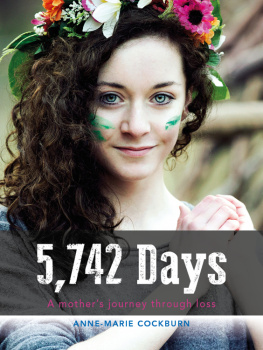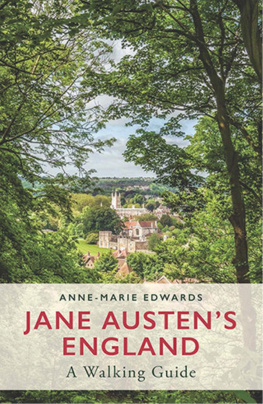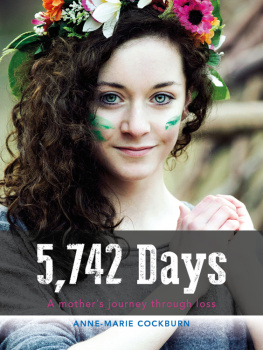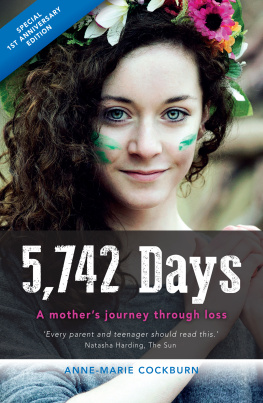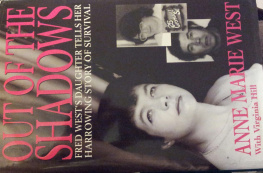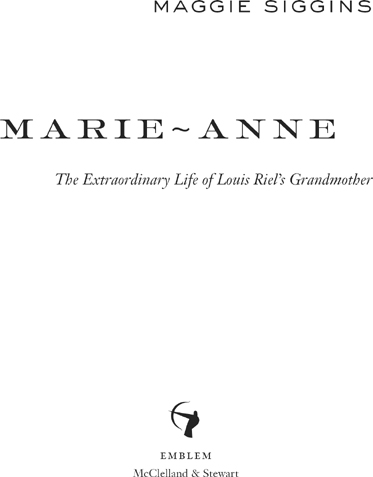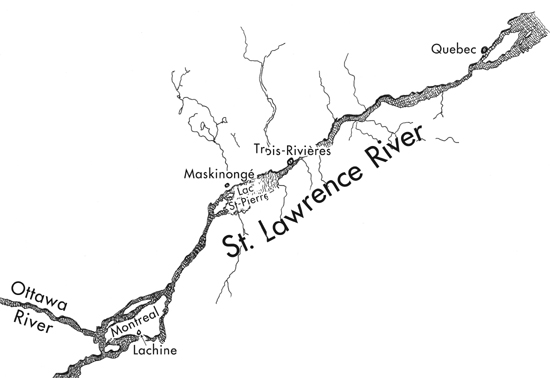The Trois Rivires area, where Marie-Anne was born and lived until she left for the North West in 1807
INTRODUCTION

W HILE WRITING A BIOGRAPHY of Louis Riel, I became aware of a figure lurking in the background who, I came to realize, had a profound influence on the great Canadian reformer and martyr. This was Riels grandmother, Marie-Anne Lagimodire, ne Gaboury. As my research progressed, I came to regard her as the most exceptional Canadian woman of the nineteenth century. The achievements of Laura Secord, Susanna Moodie, and Frances Ann Hopkins pale in comparison. She was the first woman of European extraction to live in Canadas far west, by about forty years. In 1807, she left her birthplace in Quebec to make her home first in the Red River Valley and then in the North West. In 1812 she, her husband, and their five children (three more would arrive later) travelled east again and became embroiled in the chaos and tragedy that marked the establishment of Lord Selkirks Red River Settlement.
A biography of this brave and endearing woman was obviously in order, but because there are so few documents and letters relating to her life, it seemed a daunting task. There do, however, exist several accounts of Marie-Annes life. The one written closest to the time she live is by Father Georges Dugast, and was published in 1902 by the Historical and Scientific Society of Manitoba, twenty-eight years after her death. This thirty-two-page pamphlet bears this weighty title: The First Canadian Woman in the Northwest, or the Story of Marie Anne Gaboury, Wife of John Baptiste Lajimoniere Who Arrived in the Northwest in 1807, and Died at St. Boniface at the Age of 96 Years. It and other accounts provide a skeleton chronology of Marie-Annes travels and adventures, just enough to set her in her time and place.
My husband, Gerry Sperling, and I set out to follow in this incredible womans footsteps. We tracked her along the Ottawa River and across Georgian Bay to Sault Ste. Marie. (She travelled by canoe, we by motor launch.) We visited Pembina, North Dakota, where she gave birth to her first child; made our way to Fort William, now a Disney-style reconstruction at Thunder Bay, Ontario; followed her route along the North Saskatchewan River; and spent days at Fort Edmonton, where she lived for three years. Visiting museums, archives, and libraries, and delving into family lore were part of this voyage. As a result, Ive been able to correct some of the factual errors in Father Dugasts manuscript and add considerable material to Marie-Annes story. I used original documents whenever I could censuses and wills, fur traders journals, oral histories, the eyewitness accounts of the Selkirk Settlers, and witnesses statements about the tragic Seven Oaks incident. From these, Ive attempted to recreate her life in Quebec and the North West, and at Red River.
As my investigation proceeded, I became more and more skeptical of Father Dugasts biography, where he fashioned a Marie-Anne who is entirely obedient, docile, straitlaced, and above all religiously devout. Common sense dictates that she would not have survived her adventures unless she had been one tough cookie.
Its been said that in Marie-Annes latter years she and her favourite grandchild, Louis Riel, were very close. No wonder. They were kindred spirits.
PROLOGUE

J ULY , 1868
So, my Louis, you are finally home. What a commotion youve created, all of St. Boniface clasping you to its heaving bosom. Your mother made a spectacle of herself as usual, cackling with glee one minute, and sobbing stupid tears the next. But yes, you are a sight for sore eyes, especially ancient ones like mine. So handsome, though in a refined sort of way. Nothing like the robust, raw-boned man your grandfather was. And cultured! You wear your fine education like a Josephs coat. My sitting room has been transformed into a regular Paris salon, everybody wanting to see for themselves what so many years of high-class education have wrought. Thank the Lord you didnt quote Latin at Father Barnard. He has a hard time comprehending the language. But I was pleased you spoke English with the government inspector, Mr. Whitewood. His foxhound face turned scarlet, so I guess you made him understand how lamentable our situation is here in Red River. For all that, its the Indian language that will be most useful to you, if it is here in this crude place that you hope to make your mark.
It was I who taught you the language of the sauvages. I remember you as a small boy with that head of curly hair belting out Chuk-chuk-a-thu, Chuk-chuk-a-thu, blackbird, blackbird. You learned Cree quickly, amazingly so, and I knew, even then, that you were exceptional, destined for a life almost as remarkable as mine has been.
Please, Louis, dont think this decrepit old biddy you see before you now, encased in this dowdy gown and with a cross of penance around her neck, bears any resemblance to the young woman who ran the rapids on the French River and who rode horses bareback on the open prairies like a daredevil. You and I, we have the same impetuous soul, the same reckless spirit, the same fervour.
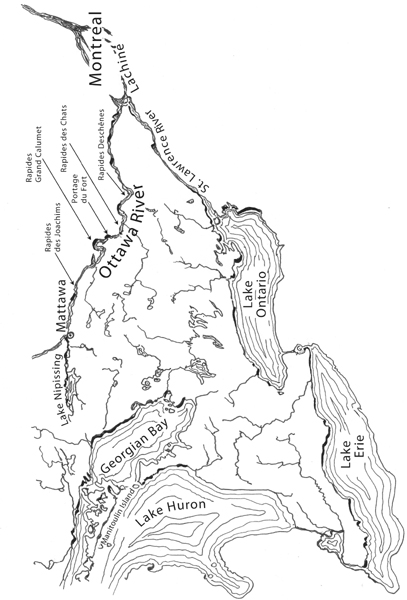
The route along the Ottawa River, including the many portages that Marie-Annes brigade encountered on the way to the North West
PART ONE
THE JOURNEY
CHAPTER ONE

H OW M ARIE -A NNE G ABOURY grew into such a hardy, fearless, even reckless young woman is hard to fathom. She was brought up to be obedient, nondescript, and always willing eager even to stifle her own desires for the good of her family. Young women in Quebec in the late eighteenth century did what was expected of them: biennial child bearing, morning-to-night farm work, care and comfort of husbands and, of course, earnest God worship. They did so without question, without complaint. Father Bertrand was to be honoured no matter how foul his breath as he mumbled admonitions from behind the confessional curtain. Hateful Madame Grignon was to be kowtowed to only because she was the sister of the seigneur. And a father was to be obeyed even if he picked out the ugliest boy in the village as his daughters future husband. Rebellion was unheard of yet Marie-Anne did indeed rebel.




